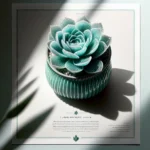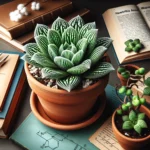Introduction to Haworthia Obtusa
Imagine a plant that enchants with its jewel-like attributes, transforming even the simplest of spaces into an exhibit of nature’s artistry. That’s exactly what Haworthia Obtusa does with such grace. Succulents have taken the world by storm, and nestled among these desert darlings is Haworthia Obtusa, a breed that captivates with its near transparent leaves and architectural symmetry.
Often mistaken for an artist’s glasswork, the leaves of Haworthia Obtusa are its claim to fame. The fleshy, glimmering leaves are like windows into a secret garden, beckoning you to peer closer. Not only do they add an element of optical intrigue to the plant, but they also exhibit a splendid rosette form, giving off a geometrically pleasing vista from any angle.
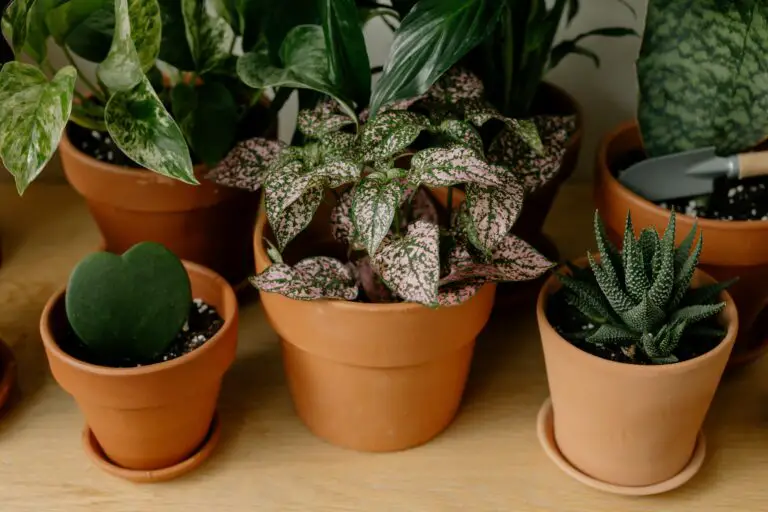
Consider it a sculptural masterpiece that doesn’t shy away from flaunting its curves. And unlike the high-maintenance demands of some finicky flora, the Haworthia Obtusa is refreshingly undemanding. It thrives on neglect, preferring to be forgotten than fussed over, making it the perfect companion for those new to the succulent care journey or seasoned plant enthusiasts who value low-maintenance charisma.
Whether it’s commanding attention on your desk or basking in the soft, dappled sunlight of a window sill, the Haworthia Obtusa’s mesmerizing form and rugged resilience make it a striking choice for any plant lover. It’s a testament to the beauty that thrives in the diverse world of houseplants, and a clear example of nature’s ability to surprise and delight in the smallest packages.
Haworthia Obtusa Habitat and Origin
Take a virtual journey to the southern tip of Africa, and you’ll stumble upon the rugged, yet dazzling landscapes where the entrancing Haworthia Obtusa emerges from rocky crevices and sandy soils. Native to South Africa, this jewel-like succulent is a master of survival, thriving in a kingdom where the sun blazes a trail across the sky and the rain is like a precious, fleeting whisper.

The robust nature of Haworthia Obtusa steers from its ability to adapt to the arid conditions of its homeland. Visualize the parched plains where the sun rules unchallenged, yet beneath the soil, the obtusa’s plump, translucent leaves harbor life-sustaining moisture like tiny crystalline reservoirs. In this unforgiving terrain, the secret to this succulent’s success lies: the unique blend of tenacity and grace it borrows from its South African roots.
Consider the often-sparse rainfall that moulds these succulents into efficient water conservationists. Each drop of rain is funneled directly towards the plant, teaching us valuable lessons in care; even at our homes, minimal watering mimics its natural habitat, propelling its growth. For the Haworthia Obtusa, these rhythms of nature—blistering sun and scarce water—are not challenges but the very conditions that nurture a resilient spirit.
It’s not just the climate that shapes this plant’s fortitude. The Haworthia Obtusa also shares its home with a diverse array of wildlife, each influencing the ecosystem in subtle yet profound ways. From the stealthy footfalls of the agile antelope to the vibrant tapestries woven by indigenous flora, the obtusa is interwoven in a tapestry of life where every thread depends on another, fostering a symbiotic resilience within each spiral of its spectacular rosette.
Emulating Nature’s Design in Care
Bringing a piece of this African essence into your garden or home isn’t just about owning a slice of exotic beauty; it’s about emulating the resourcefulness of its origin. When you welcome a Haworthia Obtusa, you’re inviting the spirit of resilience and the wisdom of water conservation into your space. So let’s tip our hats to this remarkable succulent—its story is one of survival, its beauty a testament to the wild, untamed heart of South Africa.
Optimal Growing Conditions for Haworthia
Let’s dive into the world of Haworthia Obtusa, where every succulent enthusiast can indulge in the delight of nurturing these gem-like beauties. Crafting the perfect environment for your Haworthia is akin to turning your home into a miniature nature sanctuary. The trick is to mimic the conditions of its native South African habitat without hopping on a plane!
First up, temperature is crucial for these resilient yet dainty plants. Haworthia Obtusa prefers the Goldilocks zone – not too hot and not too cold. Aim for a pleasant 60 to 85 degrees Fahrenheit during the day, which emulates the warm South African climes. At night, a slight dip to 50 to 55 degrees provides the ideal contrast, just like the cool African nights. However, these succulents can’t handle frost, so keep them snug indoors when winter whispers its chilly tales.
The light is another pillar of Haworthia care. Your Haworthia doesn’t need a suntan; in fact, indirect sunlight is its best pal. A nice cozy spot near a bright window that’s out of the direct line of fire from the sun’s rays is where your Haworthia will thrive. Bright, indirect light encourages strong growth without the hazard of sunburn, keeping those translucent leaves perfectly plump and juicy.
Humidity, often overlooked, deserves a round of applause in the Haworthia care saga. These succulents are well-adapted to dry air, making them exemplary companions for typical indoor environments. However, if you’d like to pamper your little jewel and perhaps gear up for that lush rainforest vibe, aim for a humidity level between 40% to 60%. This small tweak guarantees fresher air and a vibrant succulent bursting with vitality.
Creating a slice of Haworthia’s natural habitat can be quite the adventure. If you’re keen on exploring a range of succulent care tips, check out our ultimate guide to succulent care. And to make the journey even more interactive, here’s a handy video to guide you through the nuances of caring for Haworthia Obtusa.
Remember, simulating the natural conditions of Haworthia Obtusa at home doesn’t have to be daunting. With the right temperature, light, and humidity, you’ve got a fail-proof recipe for a thriving succulent that adds a touch of exotic allure to any space. Happy gardening!
Soil and Repotting Essentials
Let’s get down to the nitty-gritty of what really makes Haworthia Obtusa shine – the perfect soil mix. Think of it as the cozy blanket your succulent needs to tuck itself into for the ultimate slumber. These jewels of the succulent world crave a well-draining mix that mimics their natural rocky habitat, and here’s the scoop: a blend of potting soil with sand, pumice, or perlite will have your Haworthia Obtusa sending you virtual hugs of gratitude.
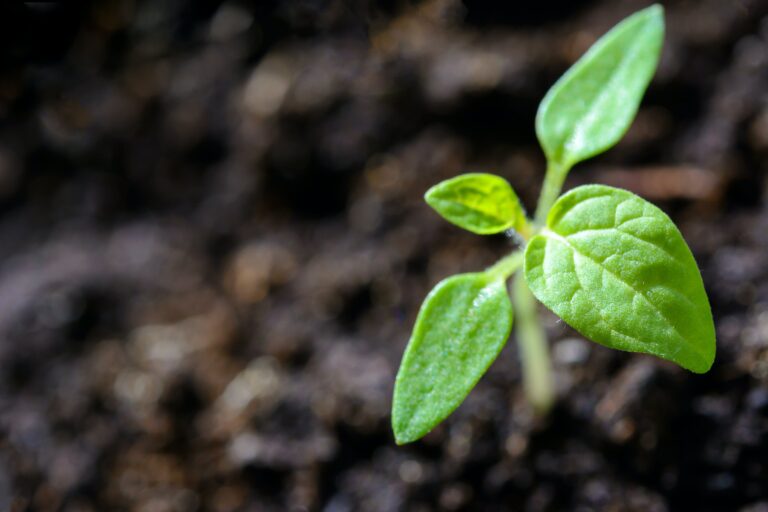
Now, don’t think you’ll need to repot these beauties faster than you go through a season of your favorite show. These succulents are slow growers, feeling quite content in the same pot for a couple of years. However, when it’s time to give your plant a new home, usually in springtime, be gentle. The root system is delicate, and it’s like performing a ballet – every move counts. Carefully tease out the roots and nestle them into their new abode with the precision of a pastry chef decorating a delicate confection.
Pro-tip: Are your succulents looking a bit off? You might want to look into the ultimate guide to succulent soil for some troubleshooters on soil issues.
So, when you’re playing house with your Haworthia Obtusa, remember that the right mix and a tender touch with repotting can make all the difference between a succulent that survives and one that thrives, dazzling all who gaze upon it.
Watering Your Haworthia Obtusa
Imagine a radiant gem, its lush, plump leaves glistening with dew. That’s your Haworthia Obtusa after a perfect drink of water! But beware, my fellow succulent enthusiasts: while these jewels of the plant world thrive with hydration, they detest wet feet. Let’s explore the art of quenching your Haworthia’s thirst without drowning its spirit.
First things first, Haworthia Obtusa is like that friend who’s a light eater—it prefers small, regular meals over a lavish feast. When watering, think of it as a delicate balancing act. Give enough water to reach the roots, where the real magic happens, but not so much that the soil becomes soggy.
The goal is to emulate the occasional, refreshing rains of its native South African homelands. So, how do we achieve this indoor? A good rule of green thumb is to allow the soil to dry out between waterings completely. This practice will encourage robust root growth and prevent the onset of rot, the dreaded adversary of succulent survival.
As each Haworthia Obtusa plant is unique, they express their need for water differently. Some may wilt, their leaves softening in a silent plea for water. Others might display a subtle paleness, indicative of dehydration. Attentive observation is key—watch for these signs and respond promptly, but gently.
If you’re desiring an illustrative guide for watering these charismatic succulents, look no further than this beginner’s guide. It holds the secret to bestowing your Haworthia with the perfect volume of water for thriving vibrancy.
Remember, watering your Haworthia Obtusa is not just a routine; it’s a ritual that celebrates its life. Embrace this act with mindfulness and joy, for it is in these quiet moments of care that we form an unspoken bond with the green world.
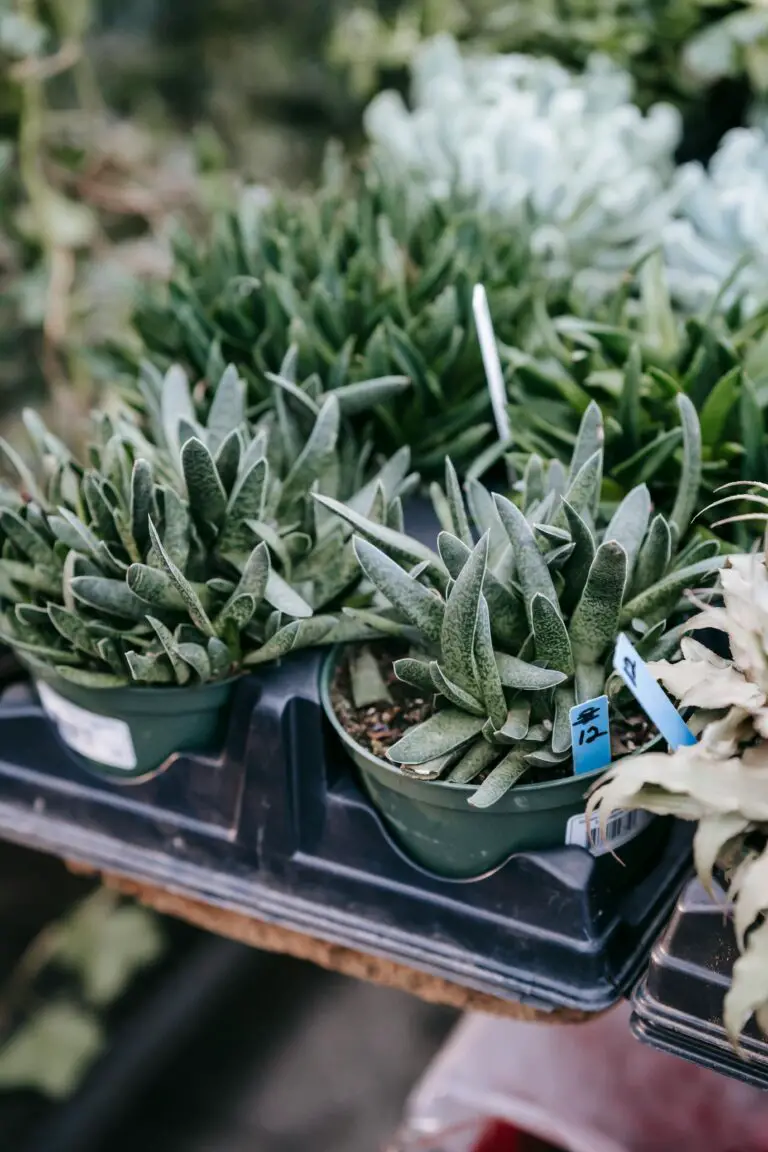
Ultimately, as caretakers of these succulent darlings, we hold their verdant vitality in our hands. So let’s cherish the beauty of Haworthia Obtusa, nurturing it with the gentle touch it so rightly deserves.
Feeding and Fertilizing Schedule
When it comes to pampering your delightful little Haworthia Obtusa, the adage “Less is more” couldn’t ring truer. This succulent, resembling a cluster of lush, green gems, covets your love and care, but heed this—it’s a sensitive soul when it comes to sustenance. Let’s unravel the mystery of feeding your Haworthia Obtusa, so it thrives in its cozy corner of your world.

Begin with the banquet—selecting an appropriate fertilizer. Steer clear of the siren song of strong chemical fertilizers that promise rapid growth. Your Haworthia Obtusa is not a fan of being rushed. Instead, opt for a gentle, balanced succulent fertilizer with an equal ratio of nitrogen, phosphorous, and potassium (commonly referred to as N-P-K). For an organic touch, fish emulsion or a seaweed-based feed works wonders, mimicking the nutrient buffet these plants might encounter in their natural habitat.
So, how often should you invite your Haworthia Obtusa to dine? Well, these plants are not the type to gorge. They prefer infrequent feedings, relishing a light meal only once or twice during the growing season, typically from spring to early autumn. An easy-going schedule to remember is to feed once at the start of spring and once more as summer waves goodbye.
Remember, over-fertilization is the quickest road to despair for Haworthia owners. It’s like offering a ten-course meal to someone who’s just had a snack—overwhelming and unnecessary. Keep an eye out for signs like salt buildup in the soil or a sudden change in leaf color, indications that you might be overdoing it. If this happens, ease up on the fertilizing and consider flushing the soil with water to give your plant a fresh start.
Take a cue from real-life examples, such as Sarah, a fellow succulent enthusiast. She created her own feeding calendar for her humble collection of Haworthia Obtusa. By following a simple biannual fertilizing routine and using a mild organic feed, she has nurtured her plants into a stunning tableau of living art. It seems that a little patience and the right touch of nutrients can lead to a vibrant spectacle in the world of succulents.
In sum, feed your Haworthia Obtusa sparingly, choosing a balanced, light fertilizer. Stick to a twice-a-year schedule, and always be on the lookout for the plant’s feedback. After all, isn’t it the subtle notes that make for the most enchanting symphonies?
Propagating Haworthia Obtusa
Have you ever marveled at the glass-like clarity of a Haworthia Obtusa and wished you could multiply this gem for your botanical collection? Propagation is your magic word! You don’t need a wand; just patience, a bit of knowledge, and love for your succulents. Let’s unwrap the mystery.
Offsets: Nature’s Cloning Technique
Also known as “pups,” offsets are the mini-me versions of the parent plant. They sprout up from the base, eager to touch the soil and grow. Use a clean knife or scissors to gently separate these tiny treasures from the mother plant. Remember to allow the cut to heal for a couple of days before planting them in their new abode. Imagine sharing these with friends, a piece of your garden that keeps on living.
Leaf Cuttings: Crafting a New Generation
Leaf cuttings require a surgeon’s precision and a gardener’s tenderness. Select a healthy leaf, pluck it with a twist, and lay it on a bed of soil. This method tests your patience as it may take a few weeks or months to see tiny roots and rosettes emerge. It’s like watching a slow-paced, mesmerizing dance as the new plant comes to life.
Seeding: The Patience-Tester
Seeds are the time capsules waiting to unfold new life. Sow them in well-draining soil and cover lightly, creating a microgreenhouse effect with a plastic wrap. Moisture, warmth, and light are their best allies. Each seedling is a surprise, a genetic lottery that could produce the next showstopper in your Haworthia collection.
Now, take a moment to appreciate the sheer beauty of Haworthia Obtusa with this striking image.
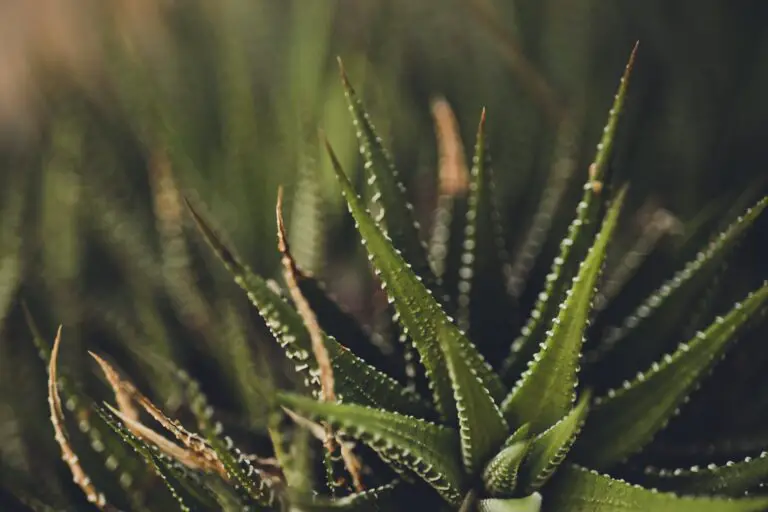
Whether you’re propagating by offsets, leaf cuttings, or seeds, each method uncovers a fascinating aspect of Haworthia Obtusa care. It’s like unlocking levels in a game where the rewards are tangible and evergreen. So roll up your sleeves and let the propagation begin!
Common Pests and Problems
Emerging from the green symphony of your garden, the Haworthia Obtusa sits like a gemstone with its pellucid leaves. However, lurking beneath its beauty are potential threats that can tarnish its allure. Let’s delve into the world of Haworthia Obtusa and unwrap the mysteries of keeping these succulents pest-free.
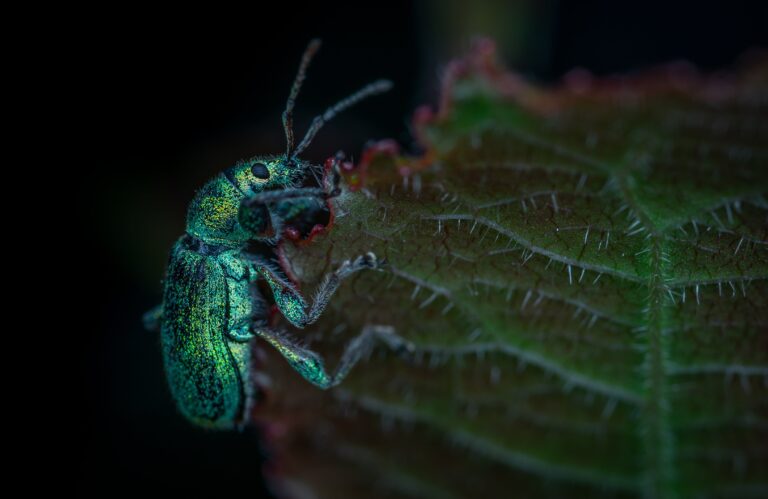
Uninvited Guests: Pest Identification
Imagine you’re enjoying a serene moment appreciating your succulent’s lustrous leaves when you spot them – tiny beasts feasting on your plant. Aphids, mealybugs, and spider mites are the usual suspects, forming colonies so minute they’re often a stealthy surprise. Let’s not forget snails and slugs who slide over like ungracious visitors, nibbling on your plant’s fleshy parts.
Defense Tactics: Prevention Strategies
What’s a succulent aficionado to do? Prevention is key, and it starts with vigilance. Regular check-ups offer early detection, thwarting pests before they become squatters. Quarantine new plants to prevent an interspecies insect soiree. Consider the power of air circulation and proper spacing—these simple acts deny pests the humid havens they so desperately seek.
Combating the Critters: Treatment Solutions
Should these cretinous critters make it past your defenses, fear not. Non-toxic soap solutions can banish soft-bodied invaders, while neem oil becomes your knight in shining armor against more tenacious threats. Remember, the key is persistence—repeat treatments and keep a keen eye post-battle for any signs of resurgence.
Engaging in this ongoing game of defense against Haworthia Obtusa pests strengthens not only your plant’s resilience but also your skills as a cultivator. With every challenge overcome, you and your succulent grow tougher, wiser, forging an unspoken bond through each trial by bug.
Decorative and Placement Ideas for Haworthia Obtusa
Transforming your living space into a quaint oasis begins with unique, eye-catching elements like the Haworthia Obtusa. This small, jewel-like succulent brings vibrancy and a touch of nature’s intricacies to any room. Its translucent, plump leaves capture and play with light in ways that can only be described as magical. But how do you showcase such a unique plant? Let’s explore some creative ideas that artfully elevate your space while providing the perfect backdrop for your Haworthia Obtusa.
Enchanting Terrariums
Imagine a miniature garden that not only showcases your precious Haworthia Obtusa but also tells a story. Terrariums are a fantastic avenue for artistic expression, where you can build a scene fit for this succulent centerpiece. Pair it with complementary plants such as petite aloes or echeverias, and sprinkle a top dressing of fine sand or pebbles to mimic a serene, desert landscape. Remember, the transparent nature of a glass terrarium allows natural light to filter through, which is just what your Haworthia Obtusa craves.
Mixed Succulent Retreats
Why not bring together a community of easy-care plant companions in a harmonious mixed succulent pot? Design your very own succulent tapestry with varying textures and hues, positioning the Haworthia Obtusa as the focal point. Utilize a broad, shallow pot to allow each plant’s individual beauty to shine. When arranging, follow an odd number grouping for a pleasing aesthetic, and nestle your Obtusa among friends that share its sunlight and watering preferences.
The Allure of Minimalism
In a world that often feels cluttered, a single Haworthia Obtusa perched upon a minimalist stand can be a breath of fresh air. Opt for stands with clean lines and neutral colors to accentuate the intricate details of this succulent. Place it near a sunny window or on a well-lit office desk for an evocative spark of green that fuels creativity and calmness throughout the day.
Each of these ideas not only cares for the needs of your Haworthia Obtusa but also makes it the star of any decor setting. Its low maintenance and high aesthetic appeal make it a versatile choice for novices and connoisseurs alike. Transform your space today and let the understated elegance of the Haworthia Obtusa accent your home’s unique charm.

Haworthia Obtusa in the Succulent Community
Amidst the vast and vibrant spectrum of succulents, Haworthia obtusa emerges as a shining gem, captivating enthusiasts with its crystal-clear foliage and compact rosette form. The plant’s allure isn’t restricted to the confines of personal collections; it’s made a palpable impact on the succulent community at large, especially within the bustling avenues of social media. Gardeners, collectors, and admirers actively share snapshots of their translucent treasures, using platforms like Instagram and Pinterest to showcase the remarkable beauty of Haworthia obtusa.
The hashtag #HaworthiaObtusa alone unveils a verdant mosaic of proudly displayed specimens, found in terrariums, minimalistic pots, and rock gardens, from every corner of the globe. This digital exhibition not only spotlights the species but also fosters an interactive space where fans exchange care tips, propagation triumphs, and styling ideas. It’s a testament to the plant’s status as much more than just a botanical oddity; it’s an emblem of collective enthusiasm and shared dedication.
Why does Haworthia obtusa command such devotion, you ask? Its resilience and adaptability play a part, allowing even the greenest of thumbs to cultivate a piece of nature’s artistry. This succulent’s compatibility with modern living spaces, flourishing with minimal fuss, makes it an ideal cohort for urban dwellers craving a touch of green. But it’s not just about ease of care; the aesthetic appeal—a cool, Zen-like tranquility radiating from each dewdrop-like leaf—is why this plant comfortably sits alongside the royalty of the succulent kingdom.
Let’s dive a bit deeper. Tune in below for a visual exploration into the care of Haworthia obtusa—learn, marvel, and become a part of this passionate online movement that surrounds these jewel-like plants.
Within the succulent community, Haworthia obtusa isn’t just a plant; it’s a living sculpture, a conversation starter, and often, the beginning of a lifelong botanical journey. Aspiring collectors spot its pellucid leaves in a friend’s apartment, sparking a flame of botanical curiosity. Seasoned growers cherish it for its unique look and forgiving nature. Whatever the entry point may be, this succulent’s ability to draw people together, bridging continents and cultures, is a green beacon of unity in a world that’s all too often fragmented.
Frequently Asked Questions
If you’ve just introduced a Haworthia obtusa into your home or you’re considering adopting one of these jewel-like succulents, you’re likely brimming with questions on how to care for it. But don’t worry; you’re not alone in your quest for a thriving Haworthia! Let’s dive into the most common queries plant parents have about these green gems.
How Often Should I Water My Haworthia Obtusa?
Imagine if you could only take a drink when the weather decided to grace you with rain. That’s the life of a Haworthia obtusa in its natural habitat. This succulent has adapted to survive droughts, so it’s best to water it sparingly. Stick your finger in the soil; if it’s dry a couple inches down, it’s time for a drink. Typically, this might mean watering every few weeks, but it’s crucial to adjust based on season and the succulent’s environment.
What’s the Ideal Lighting for Haworthia Obtusa?
The lighting for Haworthia obtusa is like finding the perfect spot to read your favorite book—enough light to see the words but not so bright that you’re squinting. These succulents adore bright, indirect sunlight. Too much direct sun can sunburn their transparent leaves, so think of a cozy spot near a window with a sheer curtain. That’s the sweet spot.
Can I Propagate Haworthia Obtusa and How?
Yes, you can! It’s like getting your favorite plant to have babies. Propagation can be done through offsets or leaf cuttings. When your Haworthia is feeling generous, it’ll produce little pups that you can gently separate and pot on their own. Leaf cuttings require a little more patience. Pluck a healthy leaf, let it callous over, and then nestle it into some soil. In time, you’ll witness a new plant take form. To see this in action, here’s a helpful video that goes through the steps:
What Are the Signs of Overwatering?
Overwatering your Haworthia obtusa is like giving it an all-access pass to the waterpark when all it wanted was a quiet dip. The signs are a soft, mushy base or leaves, and potentially black spots indicating rot. If your plant’s sending out Mayday signals, transplant it to dry, fresh soil and review your watering tactics—less is more!
Does Haworthia Obtusa Need Special Soil?
Just like a sandcastle needs dry sand, your Haworthia obtusa craves soil that won’t hold onto water for too long. A well-draining cactus or succulent mix will make it feel right at home. You can even throw in some perlite or coarse sand to increase drainage. Don’t let your plant sit in wet soil—think quick showers, not long baths.
With these tips and your attentive care, your Haworthia obtusa will not just survive, but thrive, turning your space into a small slice of succulent paradise. Each care routine you establish will echo your plant’s resilience and the beauty of its natural design, making your green thumb even greener by the day.
